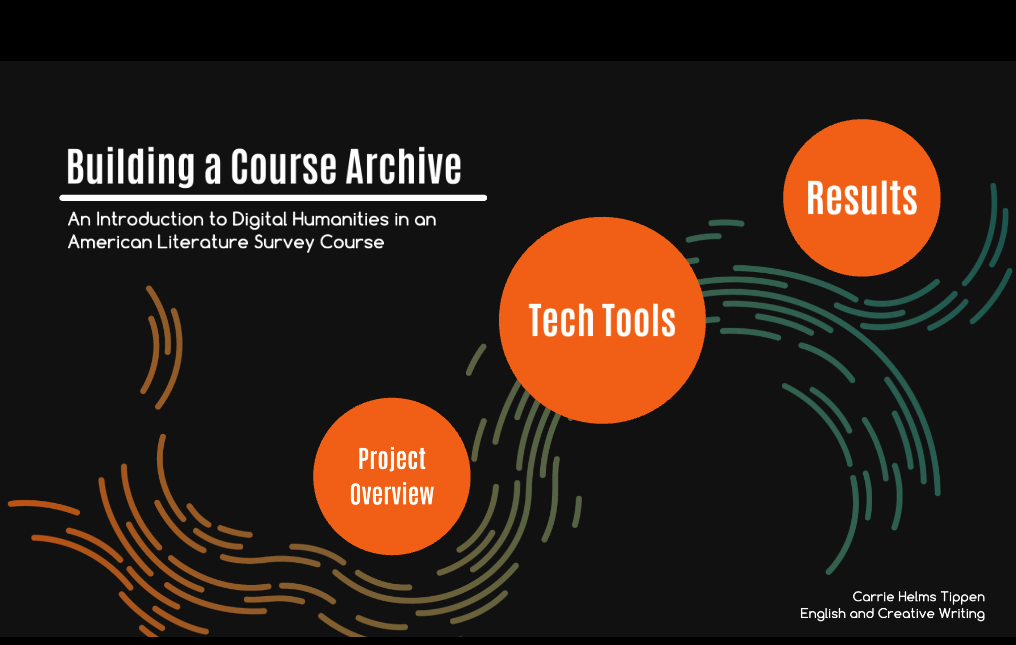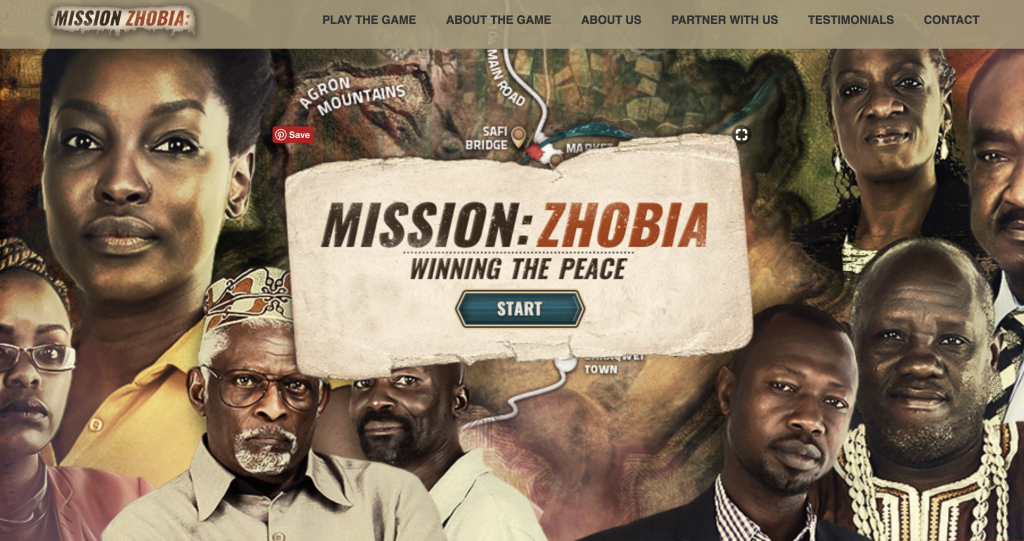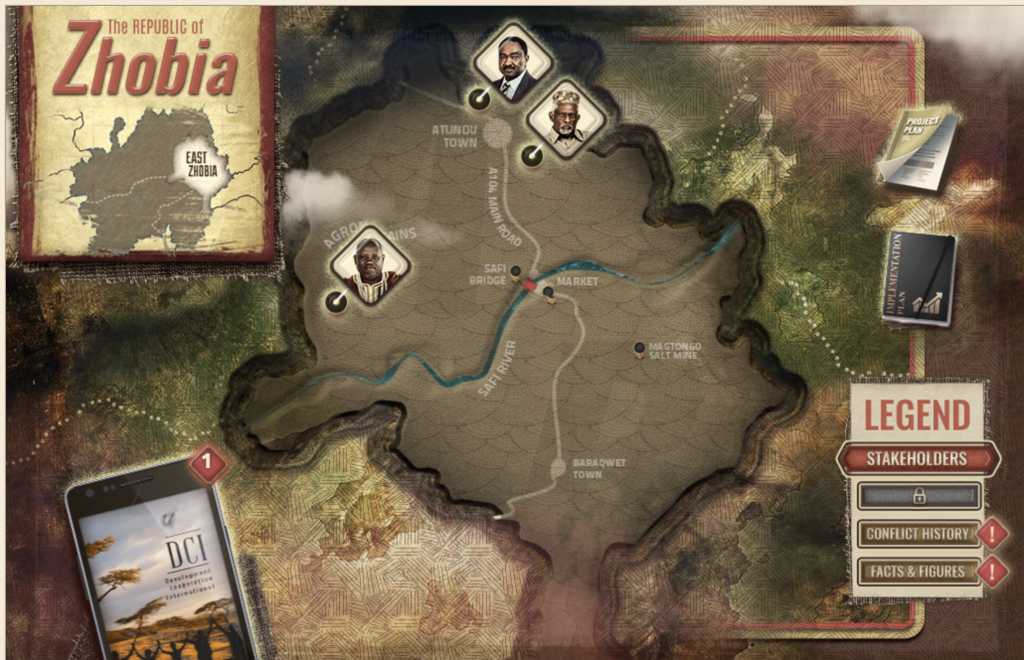Project Overview
The main goal of the project is to introduce students to digital humanities, a new and growing subfield of literary and interdisciplinary studies. The technology and the skills are transferable to other fields because the assignment is project based, independently driven, and gives students experience researching, collecting, publishing, and being aware of audience. The project meets my pedagogical and philosophical goals of the public intellectual by making the work of the university freely available to real audiences.
- At the beginning of the semester, students were assigned a primary text from the syllabus. They were allowed to work independently or in small groups.
- By the end of the semester, the student(s) added a minimum of 5 items to a collection hosted on Omeka (an online archiving tool) related to their assigned text. At least one item should be an original document demonstrating their own interpretation of the text using digital humanities methods: a video, slide show, map, graphic, database, website, transcription, etc. Other items could be links to other DH projects, PDFs, images, scholarly archives/research, any existing scholarship or archives that interpret or give context to the text.
- When we read their text in class, the student(s) assigned to it offered a presentation and lead discussion of the historical context surrounding that text. This presentation was meant to be informative, based on academic/scholarly research, and general internet searches (focusing on sources associated with libraries, universities, archives, etc.). This was a step in the process of creating materials for the Omeka archive. The class gave feedback about what is included in the presentation and what further research could be added.
https://prezi.com/view/46ZkbkMacxTrvrUe7YLH/
Planning Process
The primary challenge in planning this project was figuring out how to add an introduction to digital humanities and instruction in tech tools to an already full syllabus of reading and discussion. Every primary text I eliminated from the reading schedule also eliminated an option for students to research. I was also aware that in order for students to have the most time to complete their projects, they would need to make a lot of decisions about this project at the very beginning of the semester with very little prior knowledge or experience. I would have to get them from zero to independent in the first four weeks of class. So I planned a series of readings and “Digital Humanities Project of the Day” features to get them maximum exposure.
I also had to plan in a lot of check-points to ensure that students were working steadily and felt continuously supported in this foreign task. I asked them to think of me as an unofficial group member and project consultant. I met with each group independently to discuss their ideas, write a proposal, make recommendations for tools, and provide sample projects.
I used the SAMR model for planning. I did not want this project to be a “substitution,” like putting a paper online or using Omeka to make essentially an annotated bibliography. Instead, I really wanted students to use tech tools to create something they could not summarize in a five-paragraph essay, or to discover something about the text that was not obvious from traditional close reading practices. My goal was “redefinition:” a new way of reading or presenting the text that cannot be accomplished without tech tools.
Implementation
STEPS FOR STUDENTS (working individually or in groups)
- Choose a primary text from the syllabus to be the focus of the project. Read ASAP and begin preliminary research right away.
- Write a project proposal.
- Describe your group’s contribution to the Course Archive (excluding the new item that you will create). What is your primary text? What have you found so far that will be appropriate for our course archive? What kinds of items or objects are out there? Have other scholars already done DH-type projects with your text?
- Describe the new item that your group will create for the archive. What do you hope this finished product will be? What technologies will you be using to create the project? What data will you collect from the text? Can that data be overlaid with existing data?
- Why is this the project you want to create? What conclusions do you think you can draw from the data you will collect? What does this project add to the scholarly conversation about your text? Clearly articulate the goals and purposes of your project.
- Provide a timeline for your project with due dates for specific tasks. Assign roles to group members.
- Attach examples of the materials you intend to produce. These could be very rough draft versions, outlines, or storyboards of the materials you will produce OR materials that could serve as a model for yours.
- Describe what support you may need from the instructor (ideas and advice, connect with resources, learn technology, etc).
- Meet with instructor to discuss proposal.
- Keep records of process in a Work Log. Record all activities associated with this project: reading, researching, thinking, planning, outlining, writing, revising, note-taking, drafting, working with tech, learning new tools. Note time spent. Reflect often on progress and learning.
- In class presentation and discussion leading when your text is assigned on the syllabus.
- FINAL PRODUCT
- 5 items in the class archive on Omeka: at least one new item plus links to archives, scholarly articles, images, etc.
- Present findings to class in the final exam period.
CONTINGENCIES:
- I was afraid that students did not have enough information or familiarity with DH to come up with a new project on their own; the parameters might be too open and paralyzing.
- DHPOTD: Digital Humanities Project of the Day. I made links available and talked through the projects with students as a class to show many options.
- I created a set of pre-approved projects to choose from that could be applied to most any text (maps, timelines, wordclouds,etc).
- I should have had more in-class status updates and project sharing so that students were aware of ideas in other groups.
- My meetings with students around their proposals showed that they needed a lot of tech support or direction.
- I set up special office hours just for this class.
- I brought in a senior student with DH experience as a contact person.
- Students proposed projects that were far more ambitious than could be completed in one semester without additional support.
- I talked them through priority setting and gave permission to modify or limit the scope of their projects.
Assessment
I informally assessed students’ familiarity with Digital Humanities at the beginning of the course. As expected, students had very little exposure to DH as a scholarly activity, though they had much experience with tech tools and writing in online spaces. After reading an introduction to DH, they rated their understanding at about 2 on a scale of 1-5. After discussing that article and looking at many examples of projects, the class average moved to 4.
At the end of the semester, I administered a survey and collected 17 responses from a class of 23 students.
- Define Digital Humanities.
- All 17 answers were acceptable definitions. They centered on using digital tools to analyze written texts. Most responses emphasized accessibility: both the texts and the discoveries made from the projects were meant to be accessed in digital spaces by ordinary citizens. They also emphasized creativity in that the researcher was inventing methods of research or applying tools in innovative ways to create new knowledge.
- On a scale of 1-5, rank your feeling of anxiety when you first learned of this project. (1 = low anxiety, 5 = high anxiety)
- The average was 4. 2.
- Only one student responded with a low anxiety.
- On a scale of 1-5, rank your feeling of excitement when you first learned of this project. (1 = low excitement, 5 = high excitement)
- The average was 3.1.
- No students responded with the highest level of excitement, but only 2 responded with the lowest level of excitement.
- Now that you have finished the project, on a scale of 1-5, rank your feeling of satisfaction in the product you made (1 = low satisfaction, 5 = high satisfaction)
- The average was 3.5
- No students responded with the lowest level of satisfaction. Only one responded with the highest level of satisfaction.
- Did you work on this project alone or in a small group?
- 8 respondents worked alone.
- 9 respondents worked in groups.
- The average satisfaction for students working alone was the same as for students working in groups.
- Estimate how many total hours you think you will individually spend on this project by the time it is complete.
- 4 students chose the maximum (more than 25 hours)
- 4 students chose 15-25 hours
- 8 students chose 5-15 hours
- What (if anything) do you think you learned from this project that is applicable to other classes or scholarly work? Could you repeat any factor of this assignment in another class or in your future work?
- 4 students did not respond to this question
- The other 13 were generally positive and noted research skills as useful in other classes.
- “It’s important to force tech to catch up to the humanities. I would like to do something like this in other English classes.”
- “I can tell you it’s applicable, but I can’t word how”
- “It forced me to thoroughly utilize our library databases to find what I was looking for, and made me familiar with some that I hadn’t previously used, but of which I am now familiar enough with to know when to search through that database according to the content I’m looking for.”
- If you were assigned a project like this again, what would you do differently as an individual or group member?
- Students may have misunderstood this question as asking if they would change their group formation. 7 responses were about working individually or in a group (ex. “No I would still work in a group” was a typical but inappropriate response.)
- Recommendations from the other 10:
- Set checkpoints for amount of work
- Define search parameters earlier in the project
- Choose a different final project, perhaps more complex (“instead of just a map,” “I might try a more ambitious project, or have a partner.”)
- Choose the tool first then the text.
- Choose a text with more personal interest
- If you were the instructor giving this assignment, what might you change, add, or eliminate next year?
- More checkpoints during the semester (updates, meetings with instructor, in-class work sessions)
- More focus on the project, fewer assignments outside of project
- OR make it a short-term project
- Show more examples
Reflections and Next Steps
As I suspected, students were brand new to the idea of Digital Humanities, and even at the end of the semester, one student in particular responded, “it’s all too new to me to find a good answer” to the reflection questions. I succeeded in communicating to students the potential for creativity and the many possibilities for DH project, but that openness did not produce the best results for most students. A few really standout projects showed deep engagement with the methods of DH and the goals of the field. For example: Ben’s Excel spreadsheet of uses of the word “evil,” or Isabella and Katy’s Google Map of Samson Occom’s Life. But on the whole, as I suspected, students did not really have enough prior knowledge to be creative or the skills to meet their ambitions.
I think the next time I teach this class, I will keep the DH focus, but I will make the final a shorter-term project. It is an introductory survey class and the first introduction to an entire field of study with a class of mostly non-majors, so the assignment should be more supported and introductory. Instead of asking students to choose their projects in the first week of class, I will work with them through a few practice projects (maps of placenames, timelines of events, wordcloud analysis) as a whole class, demonstrating the decision-making processes and the technology in class, before putting them into groups to execute their own. I met with several students in the last week of classes who had made no progress on their projects since our initial meeting about the proposal in week 3, so even though DH projects are by nature time-consuming, they do not have to take 12 weeks to complete.
Overall, I think the project met my goals for introducing DH in the same way that tossing a person in the deep end of a pool “introduces” them to swimming. The immersive experience led to some really creative projects for a few upper-level students, but most students responded with safe projects and pedestrian ideas. I think the project can be revised so that the creative students can still maximize their creativity while providing enough support that more students can feel comfortable improvising and reach for creativity.




